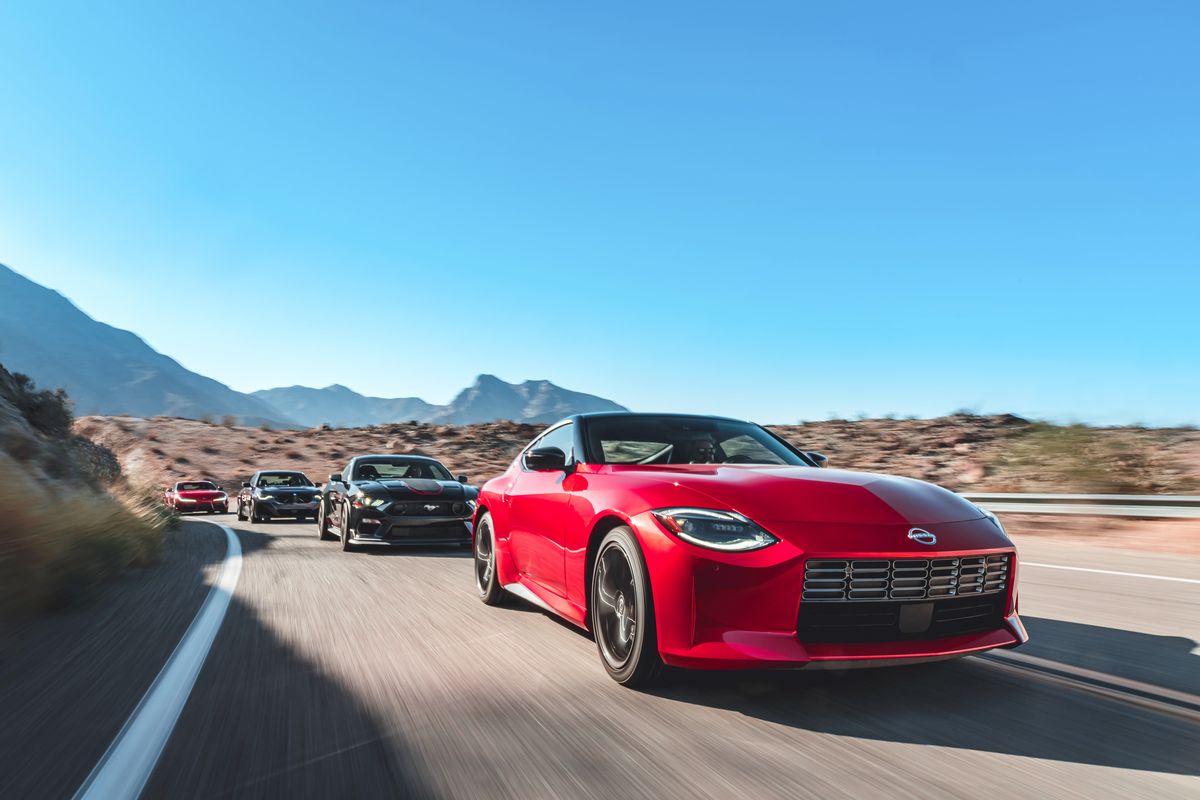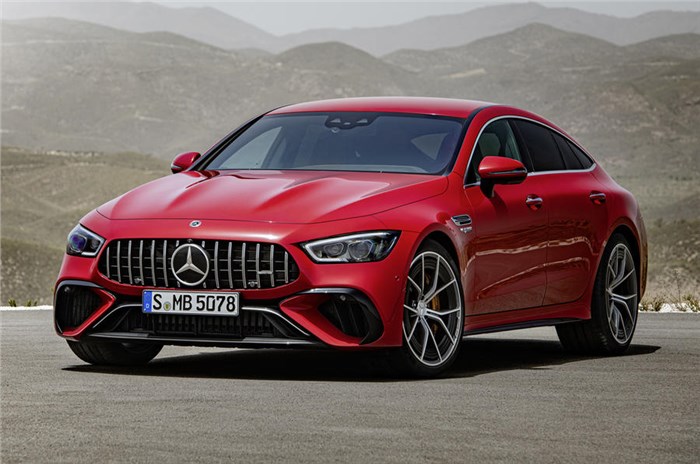We’d like to help you have more fun. If you have $60,000 to spend on a performance car, you’re clearly looking to smile more. This comparison test is designed to find what sparks joy. Fortunately, the performance cars at this price point are all grin machines.
The Nissan Z is the newest entertainer in the segment, and its launch is one of the most anticipated of the year. In addition to its 400-hp twin-turbo V-6, manual gearbox, and tidy size, the Z is priced right. A 2023 Nissan Z Performance starts at $51,015 without options, which are limited to paint and a few skippable trifles. Our Passion Red test car sits at $53,610.
Toyota’s GR Supra is the Z’s most obvious competitor. The Supra 3.0 comes with a 382-hp turbocharged 3.0‑liter inline-six, which makes an excellent foil for the Z’s same-size V-6. Right now the Supra comes only with an automatic—a manual is on the way—which gives the Z an advantage because a manual will always be more fun. The Supra 3.0 Premium we wrangled for this test starts at $56,065, with our test car’s price rising to $57,260 owing to its lone option, the Driver Assistance package.
BMW’s M240i xDrive isn’t a two-seat sports car, but it’s here because it has the Supra’s 382-hp heart planted in a coupe with a back seat and trunk. A slightly more practical alternative to the Z and Supra, the M240i also comes standard with all-wheel drive, ensuring idiot-proof acceleration. A $49,545 base price undercuts the Z Performance, but our M240i ran all the way up to $59,270 with options. Only about $2400 of that extra outlay is relevant to performance, though.
And because we opened the comparison test to cars with rear seats, we thought it right to include a Ford Mustang, specifically the track-focused Mach 1. The price and performance line up with the rest of the group, although a 2022 model was unavailable to us, which left us with a ’21 test car. Our 2021 Mach 1 carries a base price of $54,595, which rose to $60,740 with options (including rear-seat delete), the most expensive and consequential of which is the $3750 Handling package. A 2022 Mach 1 will run you $57,665, or $64,570 when equipped like our test car. Other changes include a slight drop in horsepower, from 480 to 470.
With the four contenders selected, we headed for the hills, connecting our favorite Southern California back roads in a massive loop spread across five counties. After solidifying our subjective impressions, we descended to the test track to see how they performed there.
Highs: Lowest as-tested price, Z heritage styling largely works inside and out, six-speed manual transmission.
Lows: Needs more aggressive tires, underdamped suspension feels like it’s up on tiptoes, carries over a lot from the old 370Z.
Verdict: If Nissan doesn’t release a NISMO version, the Z’s fate may fall to the aftermarket.
We know. We hated to write that as much as you’re disappointed to read it. One of the most oft-repeated mutterings during this test went something like “I wanted to like it more than I did.” Our initial brief encounter with the Z at the launch event showed promise, but in this longer fight against direct and tangential rivals on roads of our own choosing, the long-awaited Z fell to the back of the pack. At first glance it captures the value and performance of the original Z quite well, but nothing brings flaws to light like several days of driving the competition.
On the road, the Z’s twin-turbo V-6 drew consistently positive comments. It pulled hard and left us smiling. Only the dull and Pathfinder-esque engine sound and somewhat indistinct shifter feel generated any notebook gripes. In testing, the Z found itself in a limp-home mode despite extra cool-down passes and a couple of restarts. Running the 91 octane that’s the best available in California, the Z proved slower than its 400 horses would suggest. A 4.5-second run to 60 mph and a 13.0-second quarter-mile are almost a second behind the Supra and the M240i.
The problems were likely due to our Z tester’s pre-production status. Our hurry to compare the Z meant that we couldn’t get a full-fledged production car. Nissan does admit that the V-6’s peak power corresponds to 93 octane fuel. We borrowed another pre-production Z for a follow-up test in Michigan on the local 93 brew, and times fell to 4.1 seconds to 60 mph and 12.6 seconds in the quarter-mile. Those times still trail the Supra’s 91-octane numbers by 0.4 second.
It wasn’t just the engine that seemed out of step—the warmed-over 370Z chassis struggles to keep up with the rest of the group. It behaves eagerly when the car is driven modestly, and the suspension has long-travel action that handles rumpled pavement effectively. But understeer rears its head when you push the Bridgestone S007 B-Silent tires, and that chassis gets a bit sloppy because the damping can’t quite keep the car settled when you’re steaming through corners or braking hard on uneven pavement. A more aggressive tire would likely up the 0.93 g of lateral grip and shorten the 166-foot 70-mph stops.
The driving position earned praise, but the 370Z-derived seats themselves pleased no one, especially since the fore-and-aft controls again are on the transmission-tunnel side. Tall drivers following short ones had to duck in to grind the seat rearward before they could climb aboard.
After driving the car over several days, we realized that the newest Z isn’t quite the apex of the segment. But with stickier tires and the engine-management issues of our pre-production car sorted, we think the Z could have a better shot.



